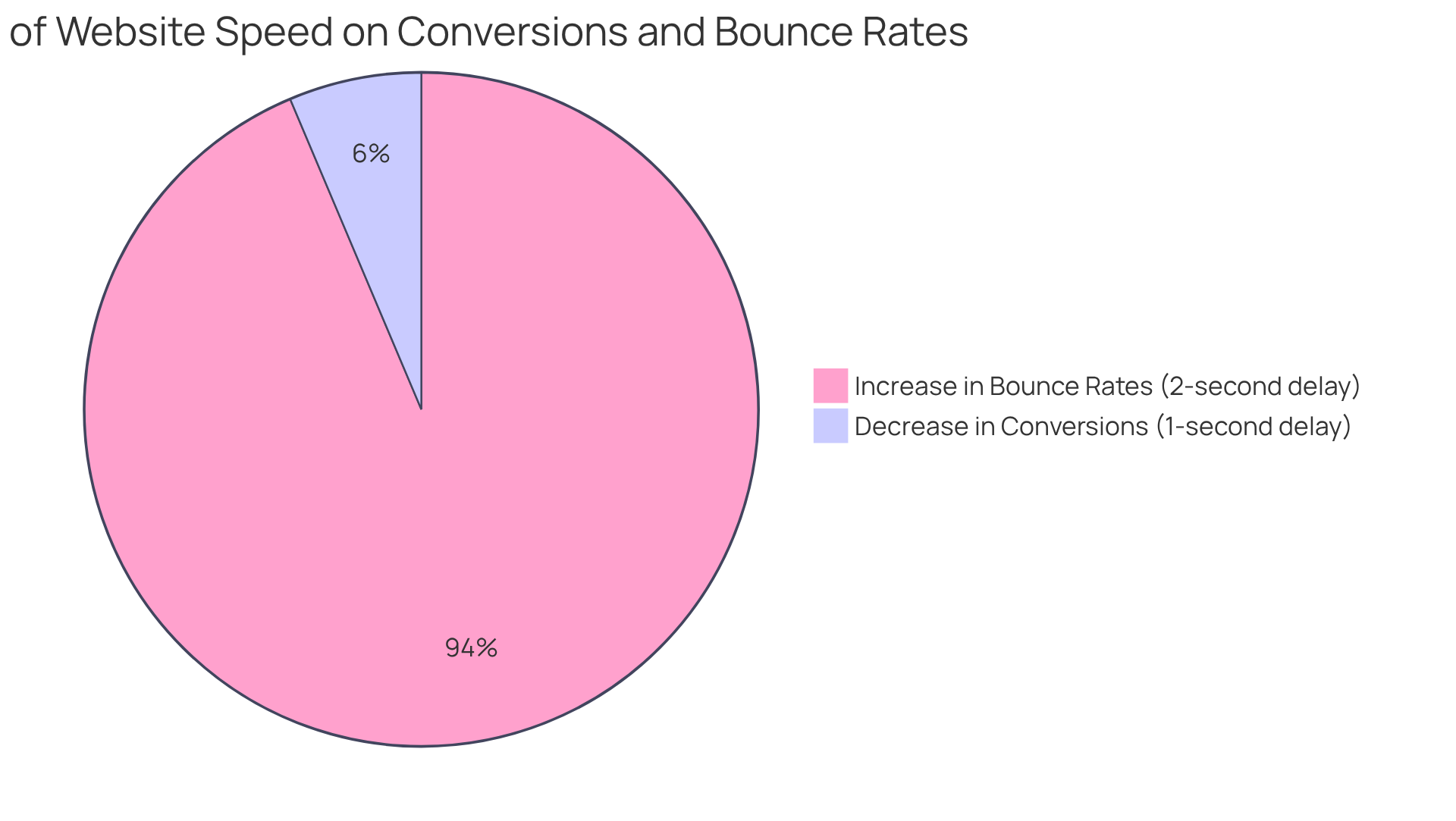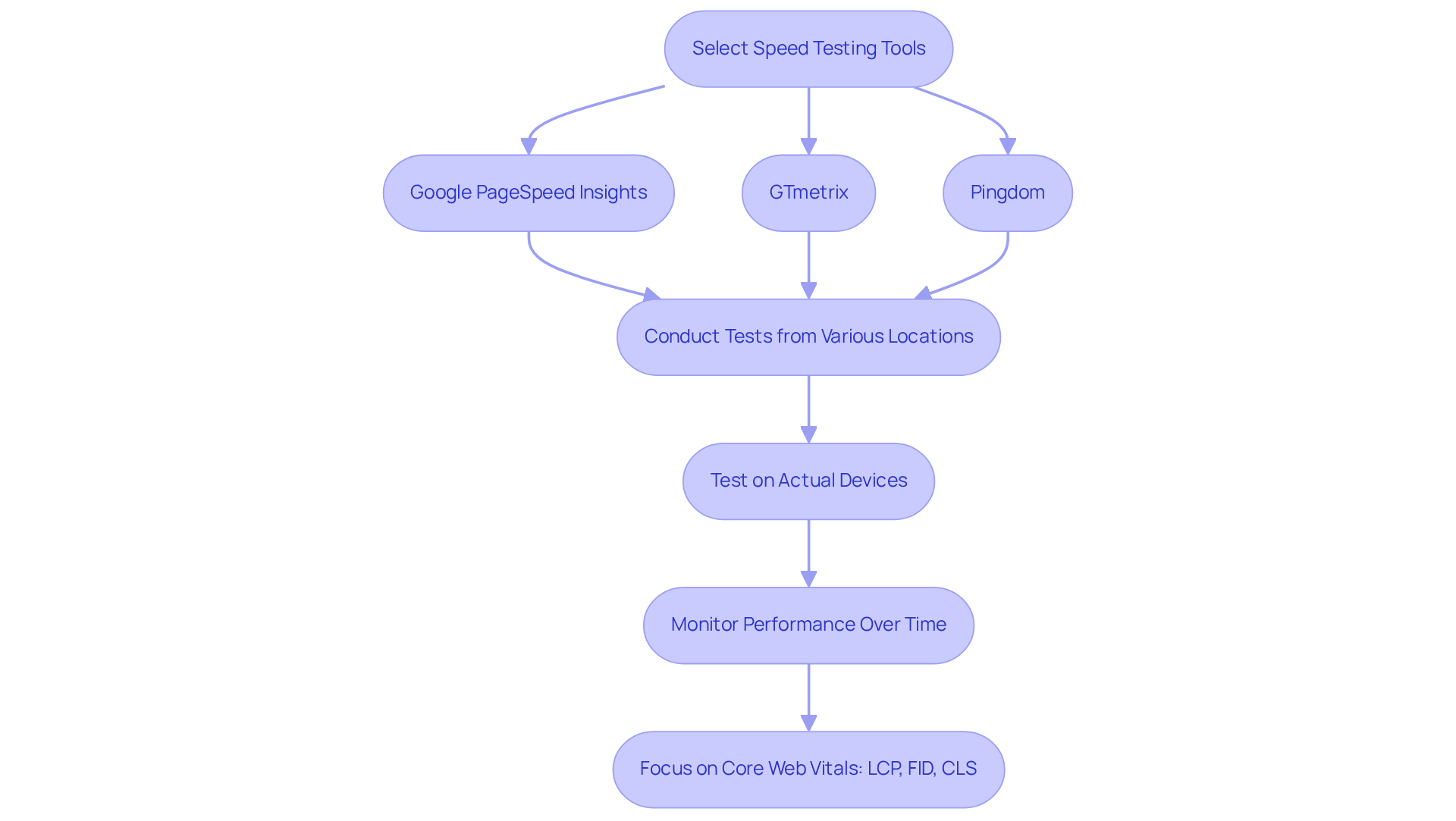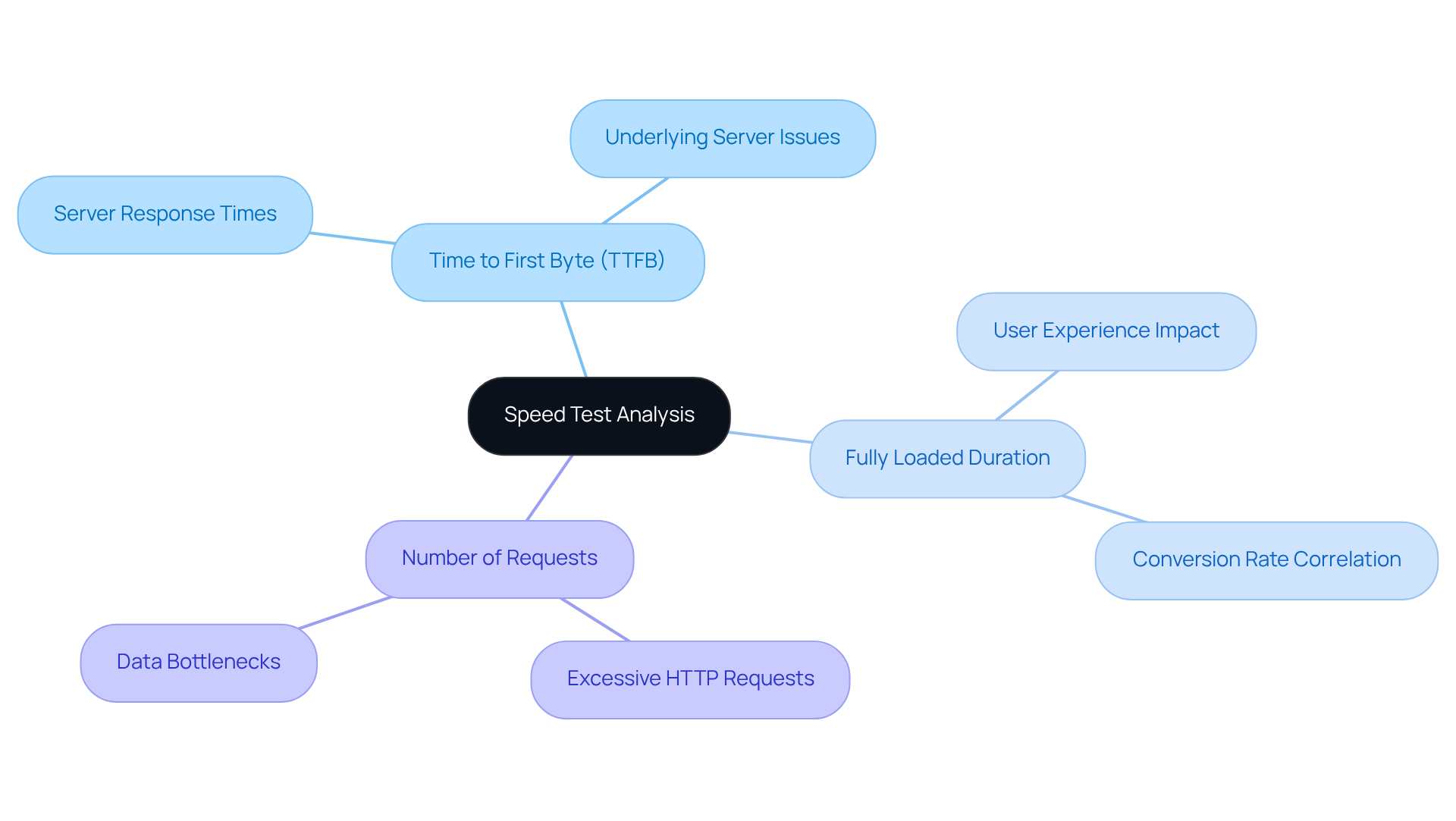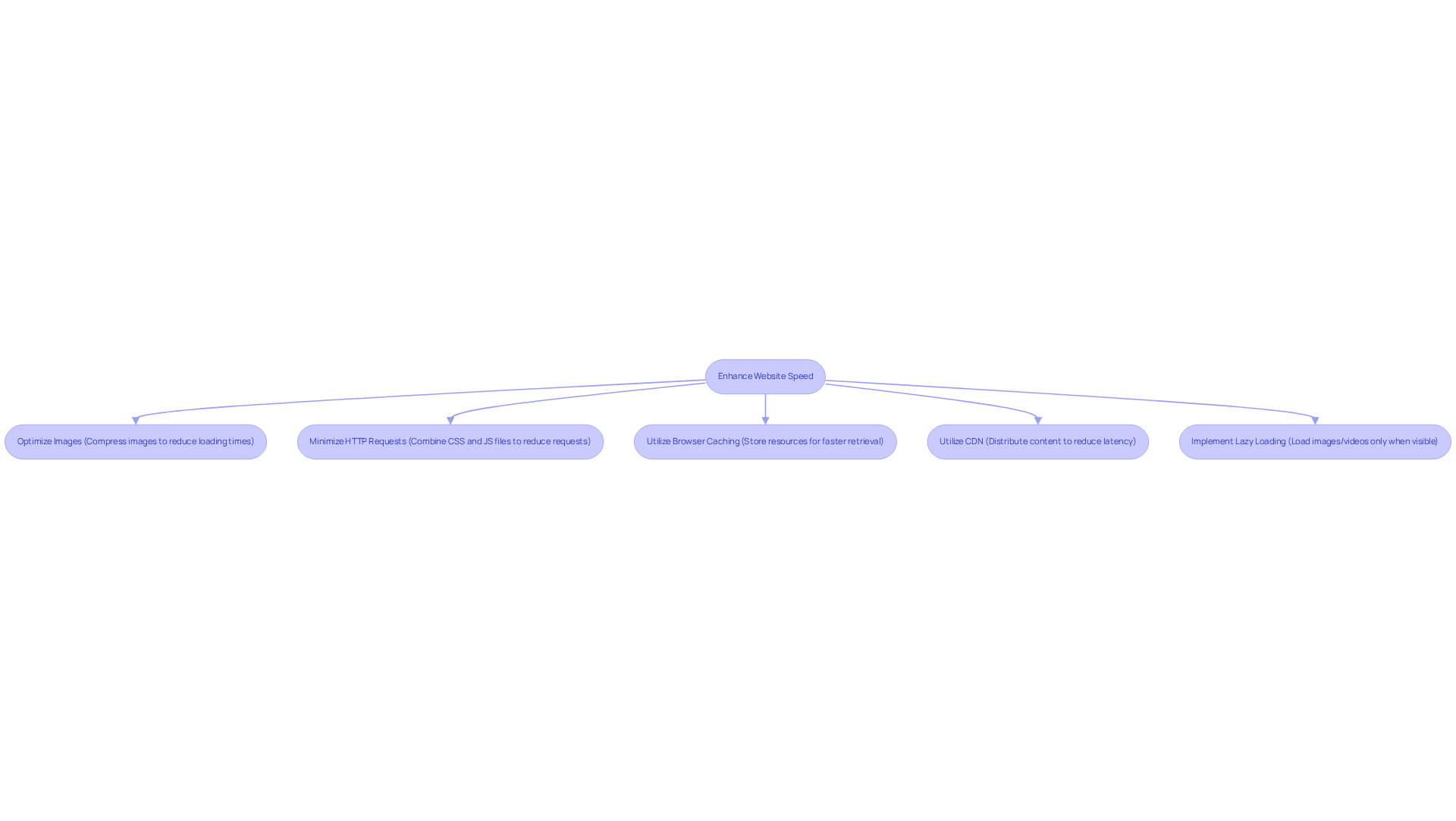
Overview
The article underscores the critical practices for utilizing a speed checker to enhance website performance, a vital aspect for direct-to-consumer (DTC) brands. It asserts that the use of effective speed testing tools, alongside strategies such as:
- Image optimization
- Browser caching
can markedly improve website loading times. This enhancement not only elevates user experience but also boosts conversion rates, a correlation substantiated by data that links load speed to sales performance.
Introduction
Website speed has emerged as a pivotal determinant of success for direct-to-consumer (DTC) brands. Research indicates that even slight delays can result in substantial declines in conversion rates. As consumers increasingly expect immediate access to information, the pressure intensifies for brands to enhance their online performance. Yet, the challenge resides in effectively measuring and improving website speed.
What strategies can brands implement to not only meet customer expectations but also maximize profitability?
Understand the Importance of Website Speed for DTC Brands
Website performance stands as a pivotal element for direct-to-consumer companies, significantly shaping user experience and conversion rates. Research indicates that even a one-second delay in page load time can lead to a 7% decrease in conversions. Notably, a 2-second delay can trigger an astonishing 103% increase in bounce rates, underscoring the imperative for companies to prioritize the optimization of response time.
Fast-loading websites act as a speed checker for website performance, which not only bolsters customer satisfaction but also enhances search engine rankings. For DTC brands, where each visitor carries immense value, employing a speed checker for website optimization can profoundly influence profitability and foster customer loyalty.
In an environment where consumers demand immediate access—47% expect a webpage to load within 2 seconds or less—a sluggish website can swiftly redirect potential customers to competitors. Furthermore, a mere 2% increase in conversion rate stemming from a 1-second improvement in performance could translate to a $200,000 revenue surge for an e-commerce site generating $10 million in annual sales.
Brands must acknowledge that a slow website can deter potential customers, culminating in lost sales, diminished loyalty, and reduced visibility.

Select and Configure Effective Speed Testing Tools
To accurately evaluate website speed, DTC companies must leverage tools such as Google PageSpeed Insights, GTmetrix, and Pingdom. These platforms deliver comprehensive evaluations of page loading durations, pinpoint performance constraints, and offer practical suggestions for improvement.
When implementing these tools, it is crucial for companies to conduct tests from various geographic locations and under different network conditions to obtain a . Furthermore, testing on actual devices rather than emulators is vital for credible results. Consistent oversight is equally important; it allows companies to monitor enhancements over time and ensure ongoing optimal performance.
Notably, studies reveal that each additional second of page load time decreases conversion rates by an average of 4.42% within the first five seconds, underscoring the necessity of maintaining swift website performance. Successful DTC companies have documented substantial improvements in user engagement and conversion rates after enhancing their site performance with these tools, as evidenced by case studies such as 'Effects of Page Performance on eCommerce Sales.'
Additionally, focusing on Core Web Vitals metrics—Largest Contentful Paint (LCP), First Input Delay (FID), and Cumulative Layout Shift (CLS)—is essential for evaluating website performance. Ultimately, improving website performance can lead to a better user experience, increased conversion rates, and an enhanced company image.

Analyze Speed Test Results for Actionable Insights
Following the execution of performance tests, it is imperative for brands to meticulously evaluate the results in order to identify key performance indicators (KPIs) such as:
- Time to First Byte (TTFB)
- Fully loaded duration
- The number of requests
A comprehensive understanding of these metrics is crucial, as they help to uncover specific issues, including:
For example, a may signal underlying server-side issues that require immediate attention. Brands should prioritize addressing the most significant problems first, as this strategic focus can lead to substantial improvements in both overall speed and user experience.

Implement Strategies to Enhance Website Speed
To enhance website speed, DTC brands must implement several key strategies:
- Optimize Images: Compress images using tools like TinyPNG to decrease loading durations without sacrificing quality. High-quality images can account for up to 56% of a webpage's weight, making optimization crucial for improving loading speed and user experience. Uncompressed images can considerably delay loading speeds, underscoring the necessity of this strategy.
- Minimize HTTP Requests: Combine CSS and JavaScript files to reduce the number of requests made by the browser. This can result in an average decrease of 30% in loading durations, significantly aiding e-commerce sites where every millisecond matters. Reducing the number of components on a webpage can further enhance loading times.
- Utilize Browser Caching: Activate caching to retain commonly accessed resources, greatly enhancing retrieval speeds for returning users. This method can improve user satisfaction, as research indicates that a one-second delay in processing can reduce conversions by up to 20%.
- Utilize a Content Delivery Network (CDN): CDNs distribute content across various servers worldwide, for users regardless of their location. Implementing a CDN can enhance site speed by as much as 30%, making it an essential resource for DTC companies.
- Implement Lazy Loading: Load images and videos only when they are visible in the viewport, significantly enhancing initial load speed. This technique not only improves performance but also reduces overall page weight, leading to better engagement and lower bounce rates. Lazy loading can save over 40 KB per page on mobile devices.
By applying these strategies, brands can create a faster, more efficient website, which acts as a speed checker for website performance, enhancing user experience and boosting conversion rates. As Mindy Weinstein emphasizes, optimizing images is crucial for SEO, and using a speed checker for website can help identify uncompressed images that slow webpage loading times.

Conclusion
Website speed optimization transcends mere technical necessity; it stands as a pivotal factor that can dictate the success of direct-to-consumer brands. The critical importance of swift loading times is underscored by the remarkable impact that even slight delays can inflict on conversion rates and customer retention. By prioritizing website speed, brands can substantially enhance user experience, elevate search engine rankings, and ultimately drive profitability.
Key strategies outlined throughout the article include:
- The selection of effective speed testing tools
- The analysis of performance metrics
- The implementation of targeted enhancements such as image optimization and browser caching
Each of these practices is integral to ensuring that a website operates at peak performance, thereby minimizing bounce rates and maximizing engagement. The necessity of consistent monitoring and adjustment cannot be overstated, as ongoing improvements can lead to significant revenue increases for DTC brands.
In conclusion, the pursuit of website speed optimization is an ongoing journey that demands diligence and strategic foresight. By adopting the practices discussed, brands can not only meet consumer expectations but also position themselves as leaders in a competitive market. Embracing these essential techniques transcends mere numerical improvement; it is about cultivating a seamless and satisfying experience for customers that can translate into loyalty and long-term success.
Frequently Asked Questions
Why is website speed important for direct-to-consumer (DTC) brands?
Website speed is crucial for DTC brands as it significantly impacts user experience and conversion rates. A delay in page load time can lead to decreased conversions and increased bounce rates.
What effect does a one-second delay in page load time have on conversions?
Research indicates that a one-second delay in page load time can result in a 7% decrease in conversions.
How does a two-second delay affect bounce rates?
A two-second delay in page load time can lead to a staggering 103% increase in bounce rates.
What are the benefits of fast-loading websites for DTC brands?
Fast-loading websites enhance customer satisfaction, improve search engine rankings, influence profitability, and foster customer loyalty.
What do consumers expect regarding webpage load times?
Approximately 47% of consumers expect a webpage to load within 2 seconds or less.
How can a small improvement in website performance impact revenue?
A 1-second improvement in performance that leads to a 2% increase in conversion rates could potentially result in a $200,000 revenue increase for an e-commerce site generating $10 million in annual sales.
What are the consequences of having a slow website for DTC brands?
A slow website can deter potential customers, leading to lost sales, diminished loyalty, and reduced visibility in the market.
FAQs











